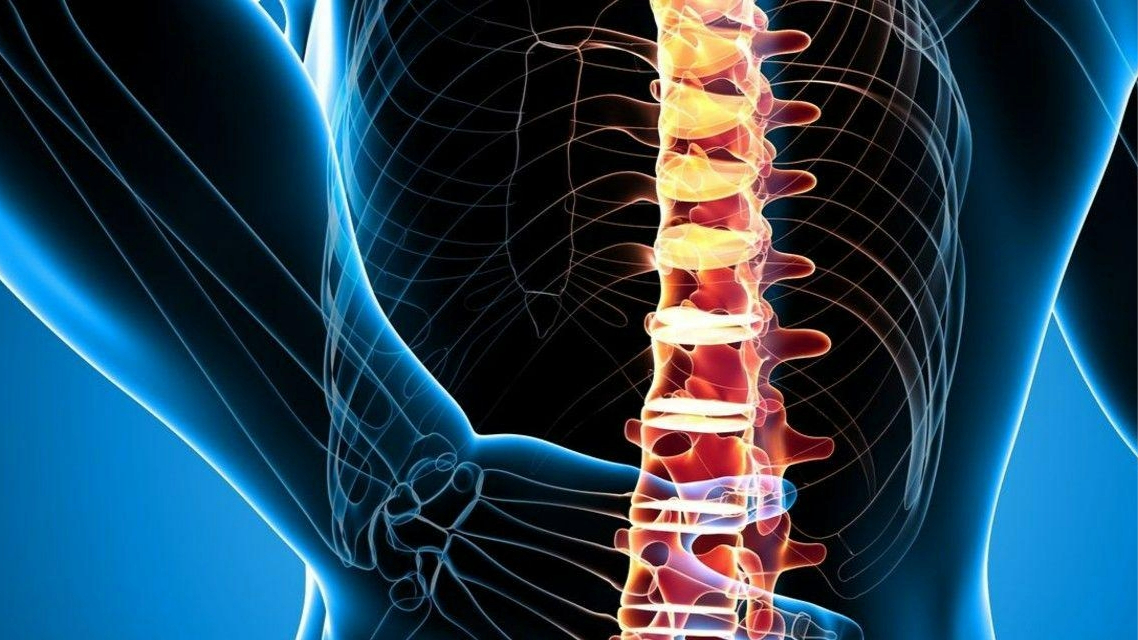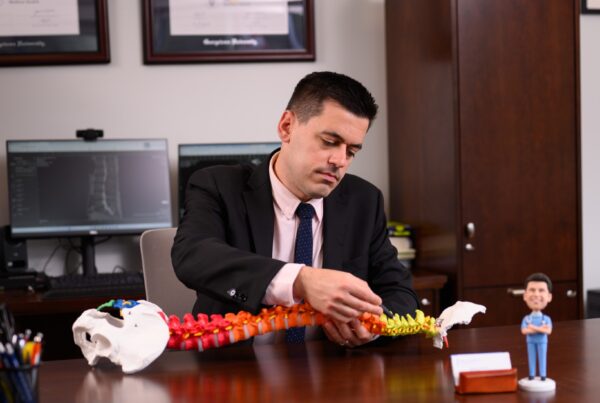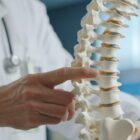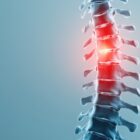Understanding the recovery process after cervical spinal fusion helps you weigh the risks and benefits before surgery.
If you’re thinking about cervical spinal fusion surgery, you likely have many questions about recovery and possible complications. How might the fusion get damaged? What if you fall after surgery? How long until you’re back to normal? These are essential questions to consider.
This guide will cover what to expect after cervical fusion, how picking the right surgeon improves your chances of success, and what to do if problems arise.
What Is Cervical Spinal Fusion?
Cervical spinal fusion is a surgery that treats neck pain and instability. These problems often come from pinched nerves. The surgery permanently connects two or more bones (vertebrae) in your neck to reduce pain and increase stability.
Two Ways to Perform Cervical Fusion
- Traditional Open Surgery: This older approach uses a larger cut and moves the neck muscles aside. This may cause more bleeding during surgery, a higher risk of infection, and a longer recovery time.
- Minimally Invasive Surgery: At Neurosurgeons of New Jersey, our doctors use techniques that require fewer cuts (often less than half an inch). This disturbs fewer muscles, causes less pain after surgery, lowers infection risk, speeds up healing, and gets you back to daily activities faster.
Both approaches aim to stabilize your spine and relieve pressure on nerves. Your surgeon will recommend the best option for your specific condition.
Understanding the Differences: Cervical vs. Lumbar Spinal Fusion
While this guide focuses on cervical (neck) fusion recovery, many patients may also be researching or considering lumbar (lower back) fusion. Here’s how these procedures compare:
Location and Approach
- Cervical fusion addresses problems in the neck area of your spine (C1-C7 vertebrae). Surgeons can approach from the front of the neck (anterior) or the back (posterior).
- Lumbar fusion treats issues in the lower back (L1-L5 vertebrae). Approaches include posterior (from the back), anterior (through the abdomen), or lateral (from the side).
Recovery Differences
- Cervical fusion typically involves less muscle disruption and may have a quicker initial recovery.
- Lumbar fusion recovery often requires more careful movement restrictions since the lower back bears more weight and is involved in daily movements.
Activity Restrictions
- After cervical fusion, you must avoid neck bending, twisting, and heavy lifting.
- After lumbar fusion, restrictions focus on limiting bending at the waist, twisting the torso, and lifting.
Physical Therapy Focus
- Cervical fusion therapy emphasizes neck stability, proper posture, and safe head positioning.
- Lumbar fusion therapy concentrates on core strengthening, proper lifting techniques, and spine-neutral movements.
Similar Success Factors
Despite these differences, many factors that influence successful recovery are the same for both procedures:
- Following your surgeon’s specific instructions
- Choosing a specialized surgeon with experience in your specific condition
- Participating fully in physical therapy
- Maintaining a healthy lifestyle that supports bone healing
Whether you’re having cervical or lumbar fusion, the minimally invasive surgical options at Neurosurgeons of New Jersey can help reduce recovery time and improve outcomes for both types of procedures.
Hospital Stay and Early Recovery
How Long Will I Be in the Hospital?
Your hospital stay depends on your specific surgery:
- Minimally invasive surgeries: usually 1-2 days
- Traditional open surgeries: usually 2-3 days
- Complex reconstructions: may need longer stays and possibly rehab
During your hospital stay, your medical team will watch your condition, manage pain, and teach you how to care for yourself at home.
Pain Control
Pain management is crucial after spinal fusion. Your medical team will set up a plan for pain medications that you’ll continue at home.
Take these medications exactly as directed and tell your doctor about any concerns or side effects. Pain control helps you move after surgery, which is key for healing and preventing complications.
Your Recovery Timeline
First Two Weeks
- Focus on rest and gentle movement
- Avoid bending, twisting, or lifting anything over 5 pounds
- Walk short distances several times daily to prevent blood clots
- Keep the surgical cut clean and dry
- Go to your first follow-up appointment
2-6 Weeks
- Start physical therapy as your surgeon directs
- Gradually walk longer distances
- Continue to avoid bending, twisting, or heavy lifting
- You might return to desk work if your surgeon approves
- You might be able to drive if you’re not taking strong pain medicine
6-12 Weeks
- Physical therapy becomes more active
- Increase activity levels as directed
- Some patients return to more demanding work
- Continue to avoid high-impact activities
3-6 Months
- Bone fusion continues to get stronger
- You may start more vigorous activities if your surgeon approves
- Follow-up imaging to check fusion progress
6-12 Months
- For most patients, fusion should be complete
- Return to most normal activities as your surgeon directs
- Long-term follow-up to monitor fusion and nearby spine segments
Remember that everyone heals at their own pace. Your recovery timeline may vary based on your age, overall health, the extent of surgery, and how well you follow post-surgery instructions.
Possible Challenges During Recovery
Signs of Infection
During the first few weeks after surgery, watch for signs of infection. These include fever over 101°F, increased swelling, redness, or warmth around the cut, drainage or odor from the surgical site, and increased pain not controlled by prescribed medication.
Wound Care
Most wounds don’t need active care, but you should watch the wound and keep it clean and dry after bathing. Follow your surgeon’s specific instructions about:
- When you can shower (typically 1-3 days after surgery)
- When you can take a bath (usually not until your surgeon approves)
- How to clean the cut area
- When will stitches or staples be removed
Blood Clot Risk
Not moving enough increases the risk of blood clots in your legs (deep vein thrombosis). To lower this risk, get up and walk several times daily, even just around your home. Move your ankles while sitting or lying down, use compression stockings if recommended, and drink plenty of fluids.
Watch for symptoms like leg swelling, pain, redness, or shortness of breath, and contact your doctor right away if these occur.
It's time to get back
to doing what you love.
Caring for Your Cervical Fusion
The bone healing process after cervical fusion takes several months. During this time, the metal hardware supports proper fusion. Most patients recover well, especially when following their doctor’s instructions.
Some things that can affect healing include smoking (which slows bone growth), poor nutrition, certain health conditions like osteoporosis, returning to physical activity too soon, or having a fall or injury.
Sometimes, the bone may not heal as expected (called pseudarthrosis), which could cause ongoing discomfort or require more treatment. However, with proper care, fusion success rates are high, and your care team will guide you through recovery to help ensure the best outcome.
What If You Fall After Cervical Spinal Fusion?
The consequences of a fall after spinal fusion depend on several factors:
- How severe the fall was
- What surface did you land on
- How long has it been since surgery
- Where the fusion is located
Even a minor bump can affect bone healing during the early weeks after surgery. If you fall:
- Don’t get up right away
- Check for sharp pain, tingling, or numbness
- If you have severe symptoms, call for emergency help
- Contact your surgeon’s office for guidance
Getting Back to Normal: Physical Therapy and Returning to Activities
Physical Therapy Plan
Physical therapy is crucial for good recovery after cervical spinal fusion. Your therapy will likely follow these phases:
- Phase 1 (1-6 weeks): Gentle range of motion exercises, learning proper body mechanics, walking program, and pain management techniques.
- Phase 2 (6-12 weeks): Core strengthening exercises, increased flexibility training, progressive walking program, and practicing daily activities.
- Phase 3 (3-6 months): Advanced strengthening, functional movement patterns, work or sport-specific training, and strategies to protect nearby spine segments.
Returning to Work
When you can return to work depends on your job. Office jobs may be possible as soon as 2-4 weeks after surgery. Light physical work usually needs 6-12 weeks of recovery, while heavy labor may require 3-6 months or more. Your surgeon will give you specific guidelines based on your procedure and progress.
Guidelines for Physical Activities
Doing strenuous activities too soon after cervical spinal fusion can disrupt bone healing. Generally, avoid heavy lifting (nothing over 5-10 pounds at first), bending or twisting your neck, high-impact activities, or contact sports, and sitting for long periods without breaks. Your surgeon will gradually lift these restrictions as your fusion heals.
Long-Term Spine Health: Protecting Nearby Segments
Adjacent segment disease happens when the bones above or below your fusion wear out faster due to changed mechanics. To reduce this risk:
- Maintain good posture and body mechanics
- Keep your core and neck muscles strong
- Maintain a healthy weight
- Don’t smoke
- Follow a spine-friendly exercise program
Regular check-ups allow your surgeon to watch for signs of problems in nearby segments and address any concerns early.
Choosing the Right Surgeon
The success of your cervical spinal fusion dramatically depends on your surgeon’s expertise. When selecting a spine surgeon, consider:
- Board certification and specialized training
- Experience with your specific condition
- Knowledge of minimally invasive techniques
- Success rates and patient outcomes
- Hospital connections and available technology
At Neurosurgeons of New Jersey, our surgeons specialize in specific areas rather than “doing it all.” This focused expertise allows for the highest level of care in complex procedures like cervical spinal fusion.
Starting Your Recovery Journey
Recovering from cervical spinal fusion surgery takes time, patience, and following medical advice. With proper care and your surgical team’s guidance, most patients experience significant pain relief and improved quality of life after fusion surgery.
If you’re considering cervical spinal fusion surgery, contact our office today to schedule a consultation with one of our expert spine surgeons. At Neurosurgeons of New Jersey, we provide personalized treatment plans and use the latest minimally invasive techniques to help you recover faster and more completely.
FAQs
How soon can I drive after cervical spinal fusion?
Most patients can drive when they’re no longer taking strong pain medication and can move well enough to safely operate a vehicle — typically 2-4 weeks after surgery.
Will I set off metal detectors with spinal fusion hardware?
Modern spinal implants are usually made of titanium and rarely trigger metal detectors. However, it’s good to know about your surgical history when traveling.
Will I need antibiotics before dental work after cervical spinal fusion?
Current guidelines usually don’t recommend routine antibiotics for patients with orthopedic implants before dental procedures. However, discuss this with both your surgeon and dentist.
Can I ever run or play sports again after cervical spinal fusion?
Many patients return to running, golf, tennis, and other non-contact sports after full recovery (typically 6-12 months). Contact sports may be limited depending on the extent of fusion and your surgeon’s recommendations.
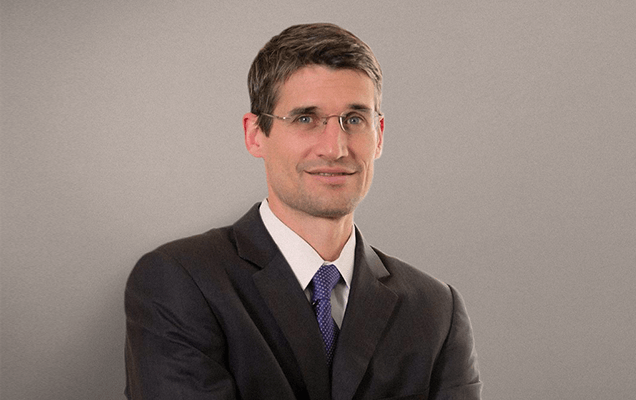
About Dr. Alfred T. Ogden
Dr. Alfred T. Ogden is an accomplished neurosurgeon in North Jersey and is a proud member of Neurosurgeons of New Jersey, practicing out of their Ridgewood office conveniently located on East Ridgewood Avenue. Dr. Ogden is internationally recognized as a leader in minimally invasive spine surgery.

